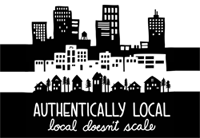Our neighbors in Wedgwood are holding a meeting tonight that has quite a few points of interests for Ravennians, too.
Here’s the agenda for tonight’s general meeting of the Wedgwood Community Council (via the WCC website):
- CleanScapes will share the fantastic news about the $50,000 the Tuesday collection area won towards a community project!
- We’ll share a bit about what the next steps are for the $13,000 grant the WCC, Sustainable NE Seattle, and others won for emergency preparedness.
- We’ll describe the “Donut Hole†and where both “Wedgwood†and “Ravenna-Bryant†begins.
- We’ll present the land use planning process the WLUC [Wedgwood Land Use Committee] is proposing and describe how you can get involved in shaping the future of 35th Ave NE.
The Wedgwood Community Council meets at Wedgwood Presbyterian Church (8008 35th Ave NE) from 7-9 PM.









Stay Connected